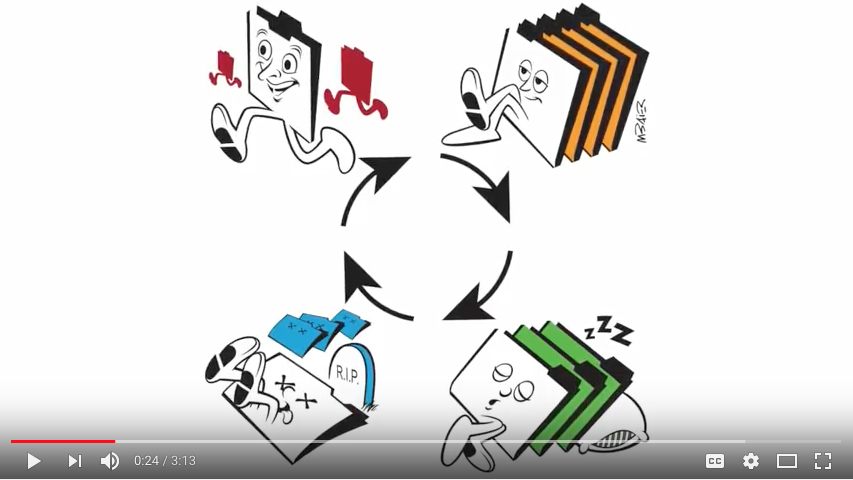This video is about organizing files by temperature. A plan for circulation is clarified by identifying 1. Red hot Running Files, 2. Warm yellow Sitting Files, 3. Cooled green Sleeping Files, and 4. Cold blue Dead Files.
ALL files are important, at some level, otherwise there’s no point in keeping them. Furthermore, the importance of a file changes over time. The key to keeping your files organized, then, is the same key to keeping everything else organized: circulation prevents accumulation. This means there needs to plan for movement in a series of manageable, reliable stages.
With paper, there are just four essential stages, which I call:
- Running
- Sitting
- Sleeping
- Dead
Here is exactly what those mean and how I clearly distinguish them by color, to keep them straight.
Running files are red hot.
I do not want to hide them away, where they will be extinguished. I want them out where they are compelling. These are files I want to make a point of acting on. I keep all ongoing projects in an incline sorter and all tasks for today on just one page on a clipboard. I can focus on JUST what’s on that red clipboard. Everything else is put away reliably. How? Read on.
Sitting files are warm yellow.
These should be in a good quality file cabinet, at arms length. These are files I need to be able to find reliably. They include information, for future reference, statements from the current tax year, and important records from the past.
Sleeping files are cool green.
After your taxes have been settled for the year, your statements from the past year should come out of your sitting files and graduate to sleeping files. These are files you are keeping just in case. Because the likelihood of needing them is remote, their storage should be remote. It could be a basement, an attic, or even offsite storage.
Dead files are cold blue.
After keeping sleeping files for a comfortable number of years, most of your sleeping files can graduate to dead files. They have no value and should be recycled or shredded. In theory, dead files are recycled and the new paper becomes new bills-to-pay and other running files, so the cycle continues. Don’t overlook a reliable system for dead files. Note: files can be dead on arrival, in the form of junk mail, but the four stages make an allowance for paper you are less sure about.
Colors are fun, but it’s very easy to get carried away with them, when organizing. If you are going to go with a color code, make sure it is comprehensive and make sure that your colors are a guide, not a distraction.
Please Share With Your Community
Testimonials
What some of our clients are saying
Imagine An Organized Home

















